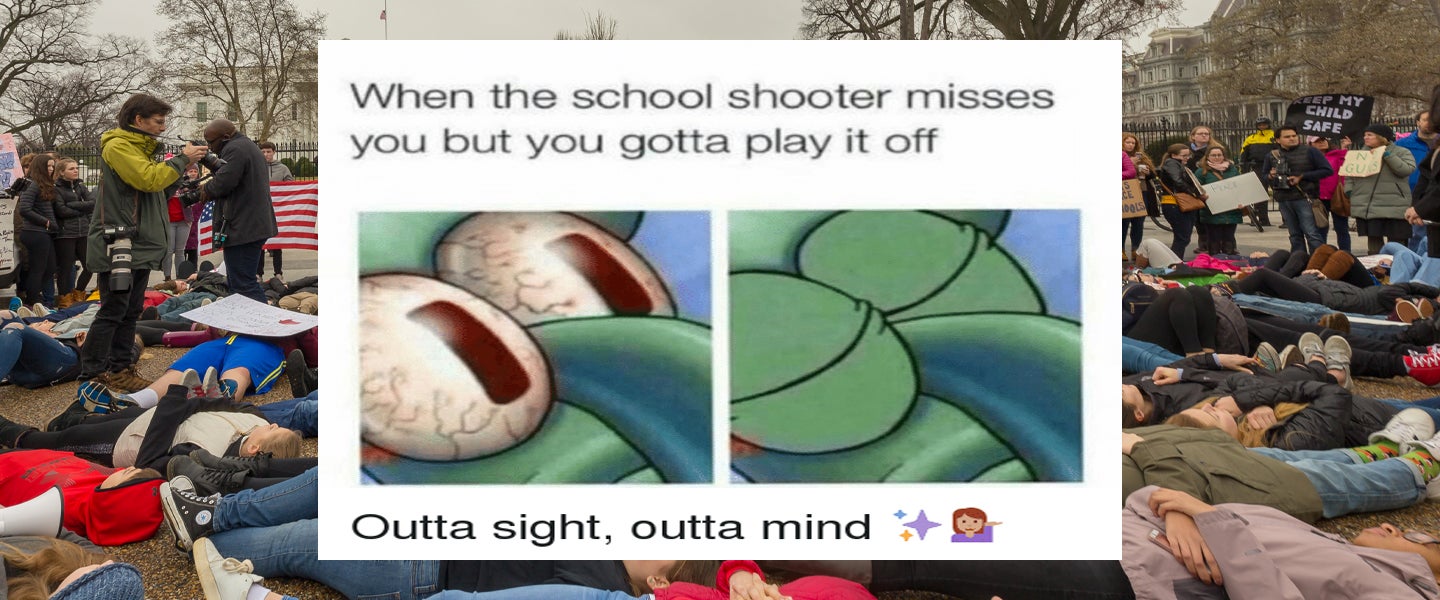Twenty years ago, the massacre at Columbine High School shattered a community, shocked the nation and launched innumerable myths around gun violence that persist to this day. The media frenzy made a significant impression among my classmates and me; we were then wrapping up eighth grade, headed to our own high school in the fall, one with an eerily similar name: Columbia. Whatever dread we felt, however, emerged not as a statement of vulnerability but in the cruel, swaggering humor of cafeteria talk between unpopular teenage boys. The strongest memory I have of the weeks after Columbine is my friends mocking the shooters for their paltry body count. With the weapons they had, one pointed out, it was “pathetic” they hadn’t killed more.
I return to this comment again and again, horrified by its prescience. It’s not just that subsequent reporting showed the number of deaths and injuries could indeed have been far higher — it’s the fixation on body count, which would become a key element of the ghastly feedback loop that connects mass killers to their headlines.
The Columbine shooters had aimed to outperform the 168 fatalities in the Oklahoma City Bombing; years later, the Pulse nightclub and Las Vegas shootings occasioned 4chan jokes about a new “high score.” Likewise, my friend had anticipated the dark humor that would feed our nihilistic attitude toward such events, not to mention the attacks themselves: The latest wave of violence in mosques and synagogues carries the unmistakable stain of internet irony and shitposting, so that we can reasonably classify it as meme terrorism.
But not every meme that speaks to the mass murder epidemic is encouraging or genocidal — and this other content, bleak as it may be, is a measure of how the conversation has changed. Since the survivors of the 2018 Parkland shooting became forceful advocates for gun control, we’ve paid more attention to the lasting, overwhelming grief of those whose lives were spared in these cataclysms. We’ve taken notice of the crowdfunding necessary for the wounded and affected families facing outrageous medical or funerary expenses. We’ve mourned the suicides following the first anniversary of Parkland, as well as the suicides of a Sandy Hook victim’s father and Austin Eubanks, a man wounded at Columbine who developed a dependency on his pain medication and eventually toured the country to speak on addiction recovery.
Most crucially, we’re now developing an awareness of what constant shooter drills and the militarization of schools has wrought for students: all-permeating fear, a battle-ready mindset, and the acceptance of death as a possible attack unfolds. This atmosphere of fatalist paranoia has birthed a strain of memes that strain to make light of the ever-present threat — and may be a secret coping mechanism for kids affected by it.
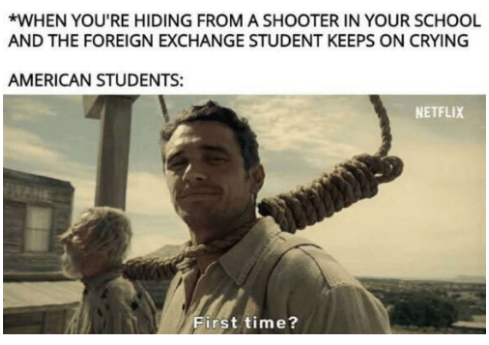




It’s difficult to say just how many of these are produced by current students vs. trolls well past their graduation date, but either way, they remind me of the days following Columbine, when my lunch table voiced unease by way of “edgy,” heartless quips. In order to not feel afraid, you had to laugh at something not funny in the slightest — to dismiss it as a lackluster performance. Back then, however, Columbine was viewed as an anomaly; now it is the norm, and the resulting memes therefore treat the prospect of hiding from a shooter as a sitcom-like inevitability, the punchline to a political farce. You can practically hear the Curb Your Enthusiasm theme playing. The end, when it comes, is bound to be absurd. Or so we tell ourselves, hoping to keep the real anxiety at bay.
When you just got done making fun of the white weird kid and he starts to reach for his backpack pic.twitter.com/JDsgw5gg1h
— Hector Quiles Jr. (@Hequilesjr7) March 6, 2018
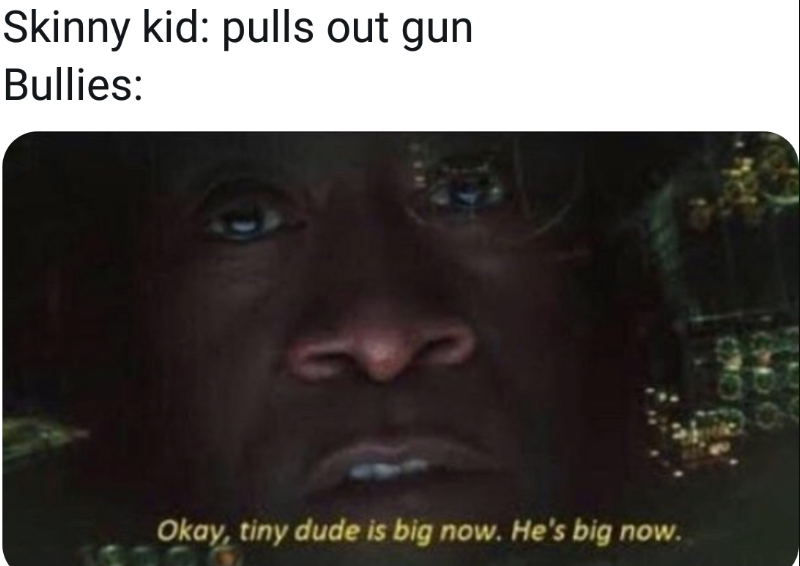
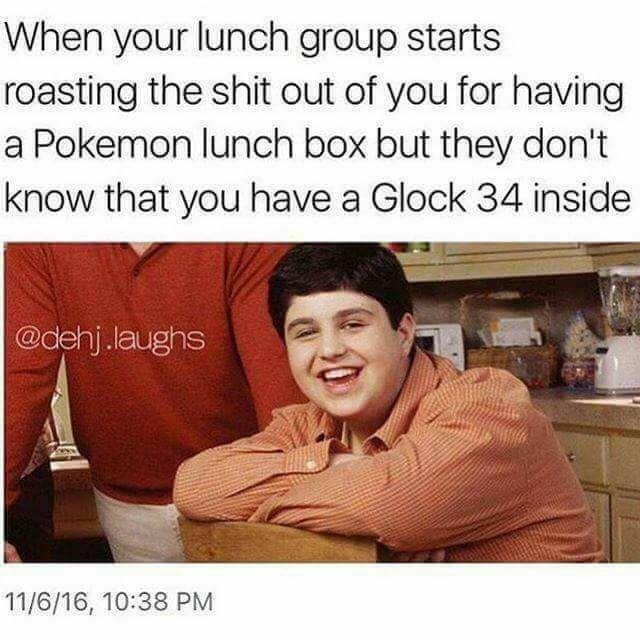


The memes also have a way of capturing real trends (the probability that a shooter is white and male) while reinforcing controversial assumptions (bullying is not, in itself, predictive of mass violence). What’s alarming is that no matter which turn the joke takes, it often encompasses a complicity or sympathy with the shooter. The worst of the worst imagine a choice to join the killer on his spree, to welcome one’s own murder out of suicidal depression, to sacrifice an “autistic” classmate to save oneself, or to sexually defile the bodies of the dead. Again, the point is to be appalling and vile, yet a secondary effect is the implication of communal blame. And while you could certainly argue that these massacres represent a societal failure, here they are largely treated as an outcome of the educational setting instead of America’s gun culture — the specificity of school shootings is paramount. Moreover, every student is a potential culprit.
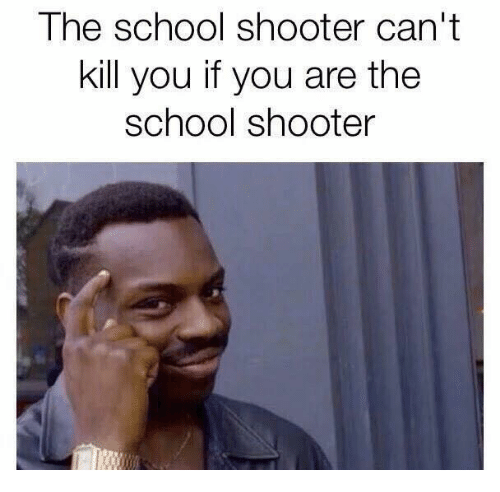

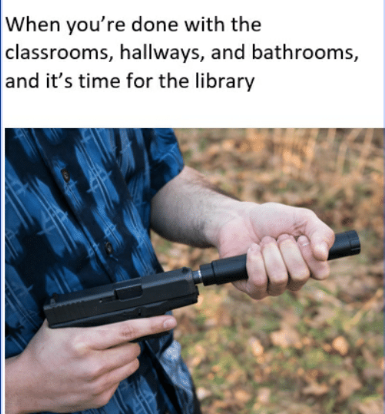
Meanwhile, precious little creative energy is directed against the entities standing in the way of meaningful gun reform — the NRA, Second Amendment fetishists, career politicians. For every meme about the hollow promise of “thoughts and prayers,” there are dozens that bypass the ideological climate in which a disturbing pattern of mass shootings can be dismissed almost daily. That’s because this is gallows humor, through and through, the output of a generation that does not dare to hope for mercy. For while it’s true that a segment of optimistic youth aims to dismantle the cult of firearms in the immediate future, many pessimists remain, and they have translated their ongoing, ambient trauma — this terrifying paralysis — into the same genre of internet fodder that they use to describe every other experience. Which ought to be all the proof you need, if you’re somehow still unconvinced, that we’ve normalized what was once unthinkable.
